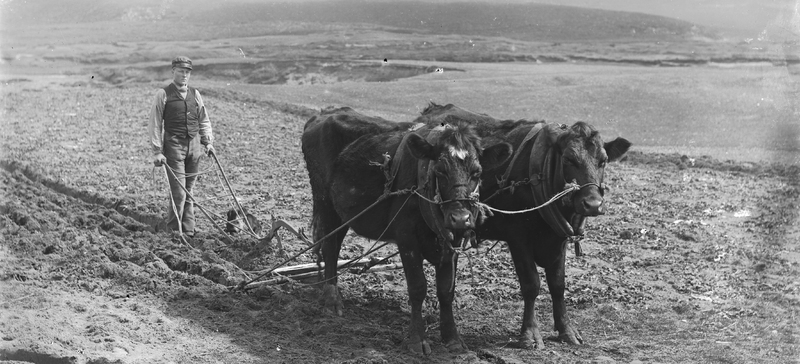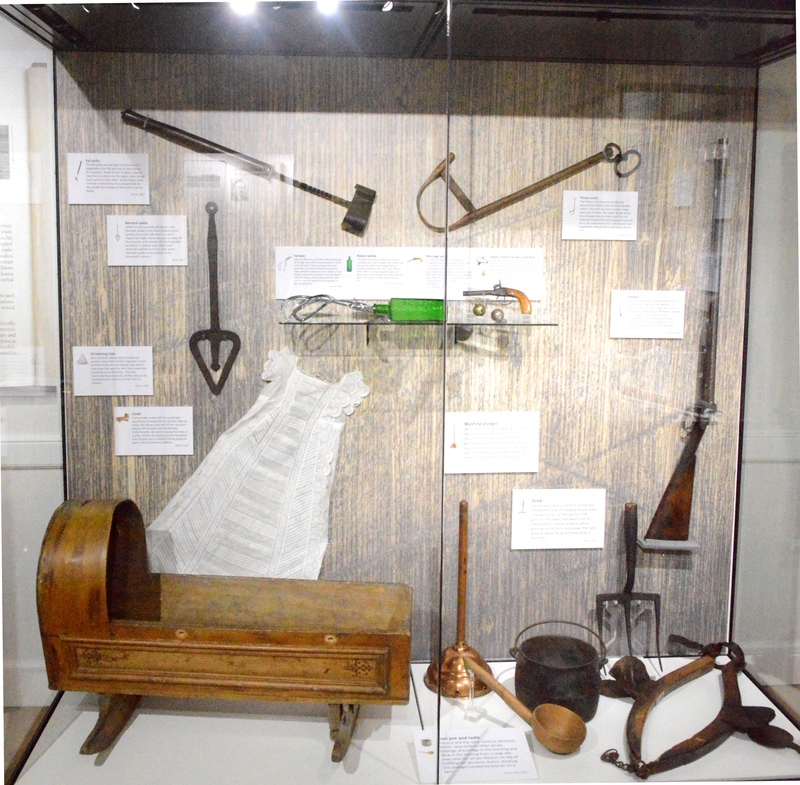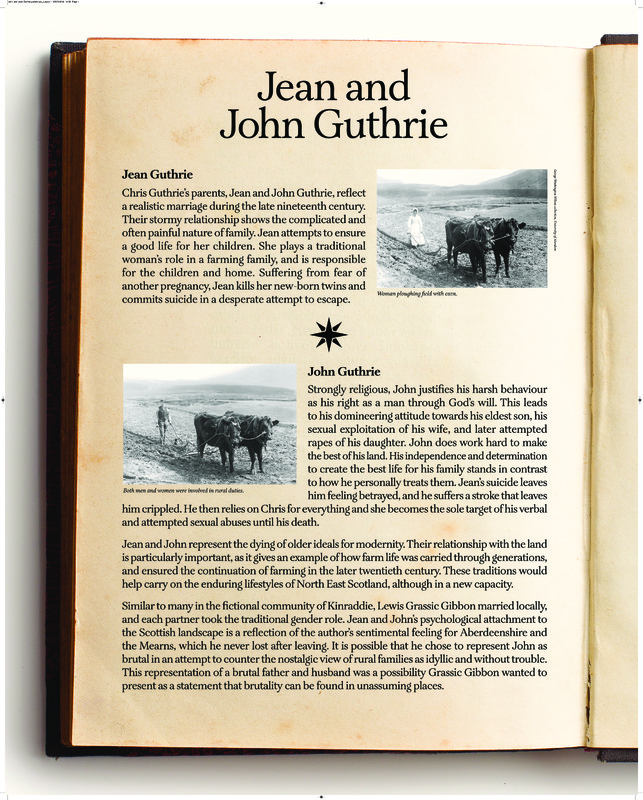Jean and John Guthrie

Jean Guthrie
Chris Guthrie's parents, Jean and John Guthrie, reflect a realistic marriage during the late nineteenth century. Their stormy relationship shows the complicated and often painful nature of family. Jean attempts to ensure a good life for her children. She plays a traditional woman's role in a farming family, and is responsible for the children and home. Suffering from fear of another pregnancy, Jean kills her new-born twins and commits suicide in a desparate attempts to escape.
John Guthrie
Strongly religious, John justifies his harsh behaviour as his right as a man through God's will. This leads to his domineering attitude towards his eldest son, his sexual exploitation of his wife, and late attempted rapes of his daughter. John does work hard to make the best of his land. His independence and determination to create the best life for his family stands in contrast to how he personally treats them. Jean's suicide leaves him feeling betrayed, and he suffers a stroke that leaves him crippled. He then relies on Chris for everything and she becomes the sole target of his verbal and attempted sexual abuses until his death.
Jean and John represent the dying of older ideals for modernity. Their relationship with the land is particularly important, as it gives an example of how farm life was carried through genertaions, and ensured the continuation of farming in the later twentieth century. These traditions would help carry on the enduring lifestyles of North East Scotland, although in a new capacity.
Similar to many in the ficitional community of Kinraddie, Lewis Grassic Gibbon married locally, and each partner took the traditional gender role. Jean and John's psychological attachment to the Scottish landscape is a reflection of the author's sentimental feeling for Aberdeenshire and the Mearns, which he never lost after leaving. It is possible that he chose to represent John as brutal in an attempt to counter the nostalgic view of rural families as idyllix and without trouble. This representation of a brutal father and husband was a possibility Grassic Gibbon wanted to present as a statement that brutality can be found in unassuming places.
Gallery
Click on image to view full size.

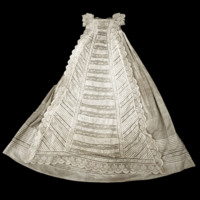
Christening robe
John and Jean, being typical traditional parents, have their children baptised. In the Guthrie family, the christening robe would have been first worn by Will, then eventually passed down to the twins. This robe represents how the purity of the child can be matched by the love of Jean for their six children.
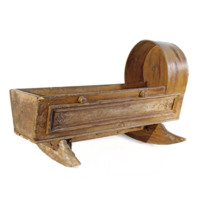
Cradle
A pine-made cradle with its curved legs would have allowed Jean to rock her baby to sleep. She always took care of her new-born babies with kindness and tenderness. Unfortunately, she cannot escape her duty as a wife, and has to continue producing babies. Even though Jean is afraid of being pregnant again, she still loves her children.
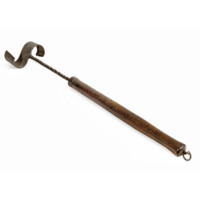
Kail gully
The kail gully was perhaps used to harvest vegetables from the ground, or slice turnips for livestock. Made of iron or steel, it would have been common in this region. John would have used this item often. As the eldest male member of the family, he is responsible for the wealth and welfare of the entire Guthrie family.
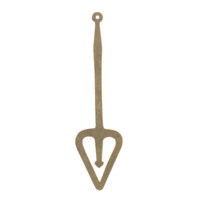
Bannock spade
Similar to the Luckenbooth brooch, this bannock spade is also heart-shaped and a symbol of love and affection. Its heart-shaped flat blade allows the user to easily lift the bannock, a flat bread, off the flat griddle on which it is baked. Jean might have received a gift like this from John when bannock spades were popular in the nineteenth century.
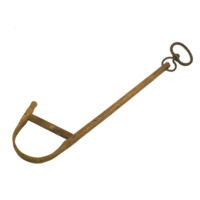
Thraw cruick
The thraw cruik shows the traditional agricultural methods John Guthrie typically prefers. This item would be used to make ropes out of straw. The simple design would have allowed John to make ropes himself, tying the straw to the hook edge and twisting the cruik round and round. John would have taught both Will and Chris how to use this as well.
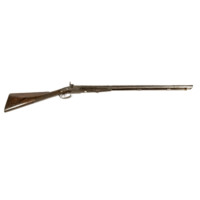
Shotgun
John, as the patriarch of the Guthrie family, buys a second-hand gun and believes ‘no other soul must handle the gun but himself’. So when Will takes the gun for target practice and is caught, John beats his son to strengthen his control of the family and illustrate his dominant position in it. The shotgun is representative of his need for power and control.
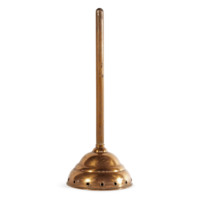
Washing plunger
Jean’s role, as a typical wife, was to be responsible for the domestic duties of the house, and to take care of her family providing everything they need. Often busy doing the washing, given the large size of the family, Jean preferred doing it in the sunshine with her daughter, Chris.
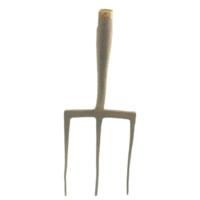
Graip
A graip was used as a fork to spread hay. The gentle curve of the graip would make it easier to pick up the hay from the ground. The object represents one of John Guthrie’s typical activities while working on the farm, and shows the hard physical labour he would have done in the fields.
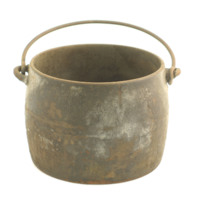
Iron pot and ladle
The pot and the ladle relate to domestic duties. Jean Guthrie often serves helpings of porridge in the morning and stew in the evening from a large pot. Jean cares for all her children on top of fulfilling her domestic duties, showing the strength needed by women on a farm.
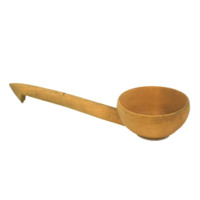
Iron pot and ladle
The pot and the ladle relate to domestic duties. Jean Guthrie often serves helpings of porridge in the morning and stew in the evening from a large pot. Jean cares for all her children on top of fulfilling her domestic duties, showing the strength needed by women on a farm.
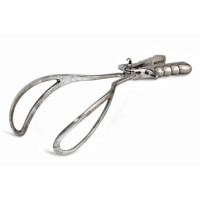
Forceps
Jean has difficulty in her fifth delivery because of her age. She suffers extreme pains for forty hours of labour. The screaming and crying distresses her family. Midwives would only have called for assistance from a doctor in dire labours such as this. In Jean’s case, the doctor finds her labour complicated and eventually turns to John for assistance and possibly for the use of forceps.
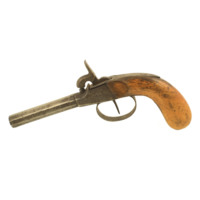
Marriage pistol
On their marriage day, the bride and bridegroom have to leave their homes and arrive at the church at the same time. Traditionally, a pistol was fired at the beginning of the journey from home to church. After the ceremony, the bride and bridegroom again fired the pistol to celebrate the union of the two families. This marriage pistol represents the survival of an old tradition in John and Jean’s generation.
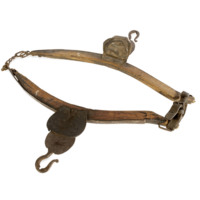
Haims (horse harness) and bells
These objects relate to John’s daily farming activities. His character represents a deep attachment to the land, and the importance of the farming tradition of his family. The use of horses to work the land meant that farmers, like John, would have developed a close bond with these creatures. The bells were used for ornamentation and would have been attached to the harness for special occasions.
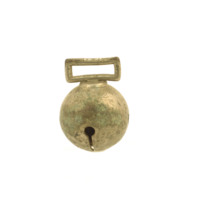
Haims (horse harness) and bells
These objects relate to John’s daily farming activities. His character represents a deep attachment to the land, and the importance of the farming tradition of his family. The use of horses to work the land meant that farmers, like John, would have developed a close bond with these creatures. The bells were used for ornamentation and would have been attached to the harness for special occasions.

